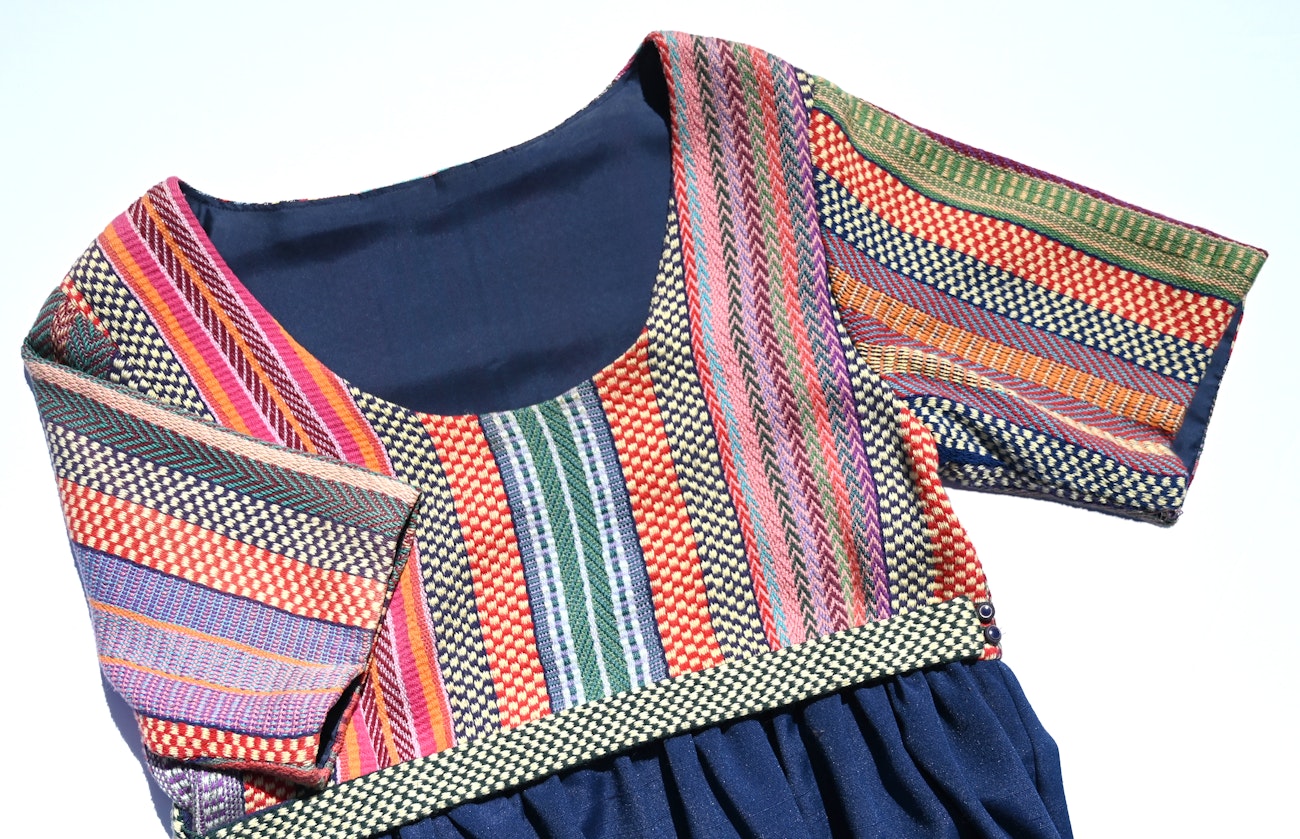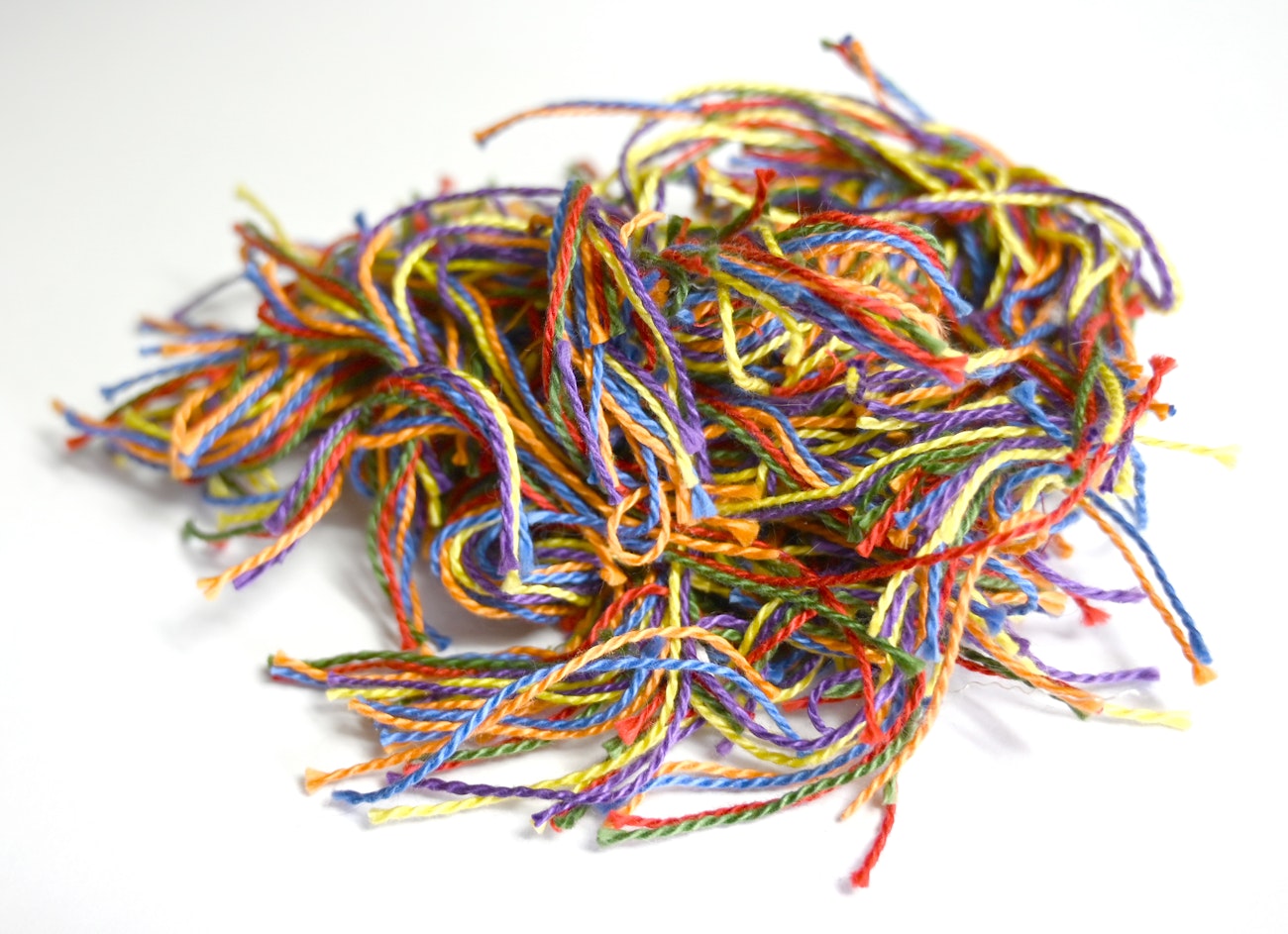I cannot tell you how delighted I am to officially introduce you all to the new editor of Handwoven, Lynn Rognsvoog. While I've had the pleasure of working with Lynn since early March, she's probably a new face to most of you—but not for long! As with Handwoven's previous editors, you'll soon get to know her well through her editor's letters, the content of each issue of Handwoven, and articles here on the website. To get us started, I asked Lynn five questions about her weaving. —Christina Garton, Editor, Easy Weaving with Little Looms
1. How and when did you learn to weave, and what is your weaving practice like now?
My mother, grandmother, and great-grandmother taught me to sew, knit, crochet, and embroider. Although my family’s heritage is Scandinavian, the only weaving I did as a child was on the occasional lumpy potholder.
As a young adult living in the big city for the first time, I spent hours browsing at newsstands, astounded by the magazines about every topic imaginable. That’s where I first stumbled on Handwoven. I found myself devouring issue after issue, although I didn’t weave and couldn’t even understand much of what I was reading.
I eventually signed up for a continuing ed course in handweaving. Actual experiences don’t always live up to our expectations, but that night class, taught by the wonderful Susan Sklarek, sent me head-over-heels for weaving.
That was several decades ago. I now have a small herd of looms and a subtantial stash of yarn. I’ve spent years weaving and, when my child was young, not weaving. I’m very grateful to be weaving again, because my days always seem to go better when I start them with a few throws of the shuttle before I launch into other work.
2. If you had to choose, would you describe yourself as a color, texture, structure, or pattern weaver?
My heart always chooses color first.
I began to understand this about myself during that night course. We were each issued a folding four-shaft loom. After we learned to wind on a warp (back to front—still usually my preference), and after we’d threaded it with a straight draw, we got to choose our weft yarns. The classroom’s shelves overflowed with wools, cottons, synthetics, and blends, in a wide variety of colors, textures, and grists.
I was drawn to the cottons in every conceivable bright color, and I combined them all in the twill, plain weave, and basketweave treadlings we were learning. When I looked over at other students’ looms, some were weaving those very same structures with muted monochromatic wefts; others were ignoring color in favor of mohair or bouclé, or yarns with slubs or knots. The samples were all lovely—and they showed how varied people’s innate preferences can be.
Many years later, vivid colors still have a strong pull on me. I admire weaving done in elegant taupes and tans, but when I choose fibers for my own projects, they’re almost always colorful.

Lynn used the cloth from her beginning weaving class for the bodice and sleeves of the dress she made for her final project.
3. What are your top five weaving resources?
In no particular order:
Handweaving.net, for the rich trove of drafts and weaving books extending back to 1677, and forward to today. When I’m planning a longer warp, I like to search the drafts by my threading to see what else I can weave without rethreading. Other features I appreciate: color substitution; profile drafting and block substitution; a draft editor; and an amalgamation tool (based on Alice Schlein’s work), which is a wonderland.
Instagram, the best place I know to see what other people are weaving right now. I follow a broad range of designers and hobbyists, weavers who support themselves on the show circuit, students who test the boundaries of what “weaving” means, and artists who use looms and fiber the way painters use canvas and oils. There’s always interesting and inspiring weaving to see on the ’Gram.
Handwoven back issues—and I’m not saying that just because I work at the magazine. Whether I have ten minutes to kill or an entire evening with nothing else scheduled, time spent reading a back issue always fills me with insights and ideas. It’s almost like I’m back at that big-city newsstand flipping through magazines, but now I understand what I’m reading.
Technique and structure books. Desert-island books that I refer to over and over include: Dixon; Strickler; Marian Stubenitsky, Janet Phillips, and Erica de Ruiter, each on a universe of structures; Best of Weaver’s; the green version of Davison; Jennifer Moore on doubleweave; Madelyn van der Hoogt on drafting; and so many others. Please don’t make me choose just one.
Weaving seminars and instruction videos. Nothing beats in-person learning, with the teacher right in front of us. For me, being around other students is almost as important. We help each other wind on or figure out tricky math together; we listen as the teacher weighs in on someone else’s quandary; and we enjoy the sheer camaraderie of a single pursuit. And because going to a seminar removes me from my everyday life, I can really focus on the weaving.
But the pandemic taught us that virtual seminars and videos have their own advantages—I can easily find and watch (or rewatch) classes led by great teachers at my convenience, and I don’t need to figure out the quirks of a rented loom (or drag my own halfway across the country). Because no travel is involved, virtual classes require less of my time and money. Perhaps the best part: I get to sleep in my own comfortable bed each night.

A pile of trimmed ends from a recent warp confirms that Lynn is still weaving with colorful fiber.
4. What’s currently on your loom?
Our son recently moved into his first apartment. For his kitchen towels he chose Erica’s Shadow Towels, a colorfully delicious design by Véronique Perrot. The draft calls for a dozen colors of yarn (most of which came from my stash, I’m happy to report).
I find this two- or four-shaft color-and-weave log cabin design a delight to weave, with a color sequence that reminds me of a Fibonacci gradient. Véronique based her work on Erica de Ruiter’s Magic Step Towels design. Erica is one of my weaving heroes—I’m astounded by what she was able to accomplish with no more than three shafts.
5. Is there a structure, technique, or type of weaving you haven’t tried that you want to learn more about?
I’m not sure I can count that high! Honeycomb, crackle, and tapestry have caught my eye, and I’ll be getting to each of them sooner or later. I haven’t fallen down the dyeing rabbit-hole yet, but I’m feeling the pull.
More immediately, I’ve never woven a rug, and I mean to get to at least one this year. Crimped cloth of some sort is also on my mind, to use in an article of clothing. If I know anything about myself, it will likely be colorful.
My Handwoven experience has come full-circle over the years—from my casual discovery of the magazine on a newsstand, to eagerly joining the team that brings it to you. There's no place I’d rather be.
I'd love to hear from you! Email your weaving questions, tips, or comments to [email protected]. And please show us Handwoven projects you’ve woven, or share what’s on your loom, by tagging your Instagram and Facebook posts with #handwovenmagazine.
—Lynn
p.s. Thanks to my Norwegian forbears, my last name looks like a mouthful, but it’s not terribly hard to pronounce: ronz-vogue (like the magazine). I will sheepishly admit to misspelling it myself now and then, and I don’t mind if you do, too.

